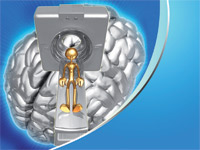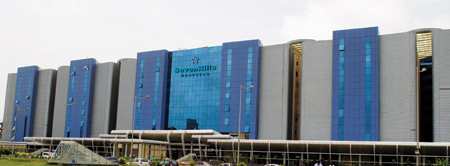 The case study highlights the importance of implementing an electronic medical record (EMR) system in the hospitals for effective management and increasing efficiency
The case study highlights the importance of implementing an electronic medical record (EMR) system in the hospitals for effective management and increasing efficiency
By Dr Karanvir Singh
An electronic medical record (EMR) system, which is the computerised equivalent of a paper case sheet containing patient medical data, is what really distinguishes a standard enterprise resource planning (ERP) solution from a hospital information system (HIS).
The EMR component in an HIS is generally believed to be the most difficult to implement. Often hospitals implement the other components first, leaving the EMR last because of the difficulties involved. Doctors are usually mobile, while computers are not, and although laptops and tablet PCs are making inroads into this they still have a long way to go. Doctors are also more pressed for time and barely have enough time to open the paper case notes of a patient to scribble a few cryptic notes. Also, doctors are well known for being resistant to change, more than hospital clerical staff. Doctors love to get data but hate to enter data.
Our initial HIS roll out had been of outpatient registration and the laboratory and imaging services in 2005. We have added more modules as the years have gone by. EMR capabilities were introduced 2 years ago. We had expected a strong resistance from doctors but were instead greeted by a flood of demand from doctors requesting EMR implementation in their departments, and the roll out has been surprisingly smooth. Analysis of why this happened contrary to our expectations is likely to benefit other sites that are trying to implement EMRs.
Introduction of a new system works best with a carrot and stick policy. In our implementation we had more carrots than sticks. The first 'carrot' was an automated discharge summary. All departments used to type discharge summaries on a word processor. Patient data was lost over time since it was next to impossible to locate the word processor file of a patient after a few months. What we offered them were EMR screens where they could enter clinical data which would then be picked up by a separate module that would print it in the form of a discharge summary. All this would be backed up by industry grade security ensuring data availability even decades down the line. This immediate return offered by an automated discharge slip, even though much less than the returns from data retri at a later date is what tipped the balance. We realised that something as trivial as an automated discharge summary should not be underestimated as a force that could influence EMR adoption and it is something other sites would do well to keep in mind.
The other 'carrot' was availability of analysable data. If doctors could analyse the huge volume of entered clinical data they could get more research material and many more publications. While designing the EMR screens we ensured that free text typing was restricted as much as possible and data was captured in a granular fashion resulting in the data being immediately available for data analysis. Structured data entry is of crucial importance in a good EMR.
We were fortunate to own a very good business intelligence software (Speedminer from Hesper, Malaysia) which we quickly adapted to clinical data analysis. Within days of EMR data entry being started in a department we were able to provide them with dashboards showing clinical data in the form of analysable charts. Starting just 2 years back, we have now reached a stage where about 95% of admitted patient's clinical records are being entered into the EMR (about 160 patients per day), and we expect to have 100% data entry within months. The lesson is that it is not a good idea to introduce the EMR until

Be a part of Elets Collaborative Initiatives. Join Us for Upcoming Events and explore business opportunities. Like us on Facebook , connect with us on LinkedIn and follow us on Twitter , Instagram.






